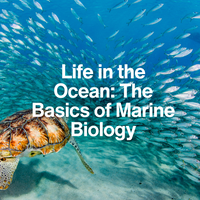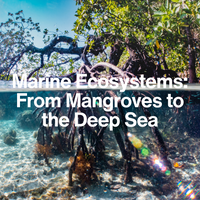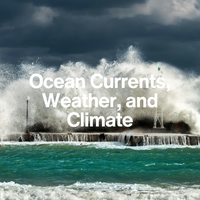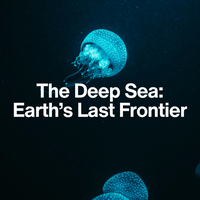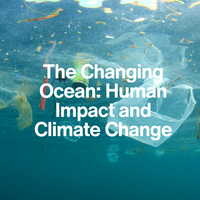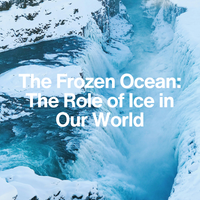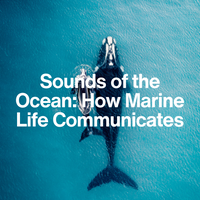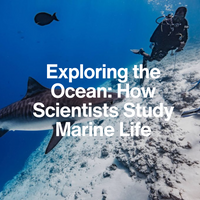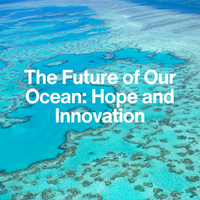LESSON 3
What Is DNA Barcoding, and How Do We Discover New Species?

Introduction:
A Genetic Map of the Ocean
The ocean is teeming with life—most of which we’ve never even seen. With more than 2 million marine species estimated to exist, and new ones discovered every year, the big question is: how do we know what’s out there?
In this lesson, we’ll dive into the world of DNA barcoding—a cutting-edge method that allows scientists to identify species based on their genetic code. From solving mysteries in the food chain to discovering life in the deep sea, this technology is transforming how we study—and protect—marine biodiversity.
1. Satellite Tags: Eyes in the Sky
Just like products in a shop have barcode labels, every living organism has a unique genetic code. DNA barcoding uses a short section of an organism’s DNA—usually from a gene called CO1 (cytochrome c oxidase I)—as a kind of molecular ID tag.
How it works:
- A tiny tissue sample is taken from an organism (or its remains).
- Scientists extract DNA from the sample and sequence the barcode region.
- The DNA is compared to a global database to match it to known species—or flag it as something new.
It’s fast, accurate, and powerful—even when only fragments or traces of the organism remain.

Did you know?
Some scientists believe we’ve only described less than 20% of marine species so far—and many could disappear before we even know they exist.
2. Why DNA Barcoding Matters in the Ocean
In marine environments, traditional methods of identifying species (like visual surveys or net sampling) are time-consuming, limited by visibility, and often miss tiny or cryptic organisms. DNA barcoding offers a new way forward.
Here’s what it helps scientists do:
- Identify species at every life stage, from eggs to adults—even when they look completely different.
- Detect species that are morphologically similar but genetically distinct (called cryptic species).
- Confirm the identity of species caught in fisheries, aquaculture, or seafood markets.
- Track the spread of invasive species that threaten native marine ecosystems.

Did you know?
In coral reef studies, DNA barcoding has helped distinguish between species of fish that are visually identical—allowing better monitoring of biodiversity and fishing pressures.
3. Environmental DNA (eDNA): Finding Life Without Seeing It
One of the most exciting developments in recent years is eDNA—short for environmental DNA.
Instead of sampling the animal itself, scientists collect water (or sediment) and look for genetic traces left behind, like skin cells, mucus, waste, or reproductive material.
What this means:
- Scientists can now detect which species are present in a given habitat without ever seeing or catching them.
- eDNA works well in remote, deep, or sensitive environments, such as polar seas, coral reefs, and marine protected areas.
- It’s especially useful for monitoring rare or endangered species, such as seahorses or deep-sea sharks.

Did you know?
Whale sharks, the ocean’s largest fish, shed so little DNA that scientists used eDNA from water samples taken directly behind them to confirm their presence!
4. Discovering New Species: A Genomic Gold Rush
When a DNA barcode doesn’t match anything in the global database, scientists may be looking at a species that’s new to science.
Did you know?
A single deep-sea trawl in the Pacific Ocean recently revealed hundreds of potential new species, many confirmed through DNA sequencing.
5. What DNA Is Teaching Us About the Ocean
Beyond identification, DNA is helping scientists:
- Reconstruct food webs by identifying stomach contents or predator–prey links
- Monitor genetic diversity, which helps populations adapt to changing environments
- Understand evolutionary relationships among marine animals
- Assess the health of ecosystems by tracking species composition over time
This is crucial in a world where oceans are warming, acidifying, and changing rapidly. Genetics gives us the tools to understand what’s here, what’s disappearing, and how to protect what remains.

Conclusion
A Blueprint for Biodiversity
DNA barcoding is revolutionising marine science. By turning invisible genetic information into readable data, it allows us to map the vast, hidden diversity of life in the sea—and do it faster and more accurately than ever before.
With every drop of seawater and every genetic sample, we’re learning more about the ocean’s complexity, resilience, and vulnerability. And in a time when biodiversity is under threat, that knowledge isn’t just powerful—it’s essential.
We can’t protect what we can’t name. Thanks to DNA, the ocean’s unknown residents are finally getting their labels.
Key Takeaways:
DNA barcoding uses a small gene sequence to identify marine species—even from tiny samples.
It’s essential for tracking biodiversity, detecting invasive species, and uncovering new life forms.
eDNA allows scientists to detect species by analysing the water for genetic traces.
Genetics is reshaping how we study ecosystems, food webs, evolution, and conservation.
NEXT LESSON
The Role of Submarines and ROVs in Deep-Sea Exploration
Let’s head to the ocean’s most mysterious frontier—the deep sea—and explore how robots, subs, and human ingenuity are helping us access the ocean floor.





